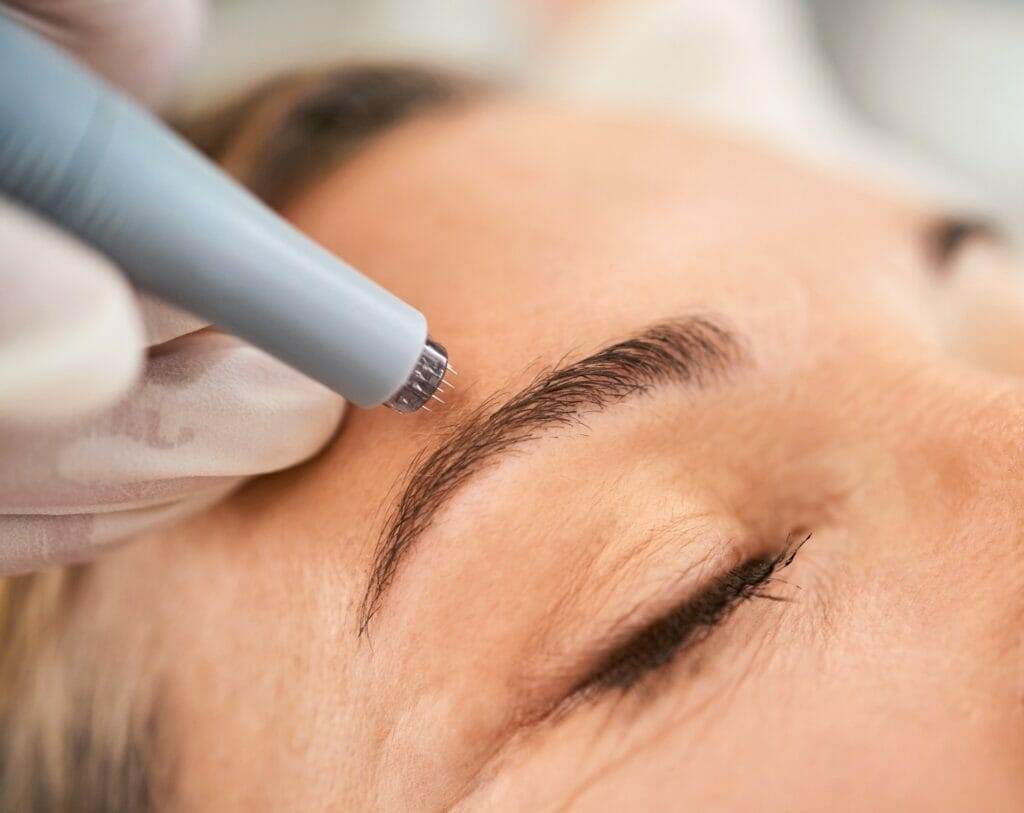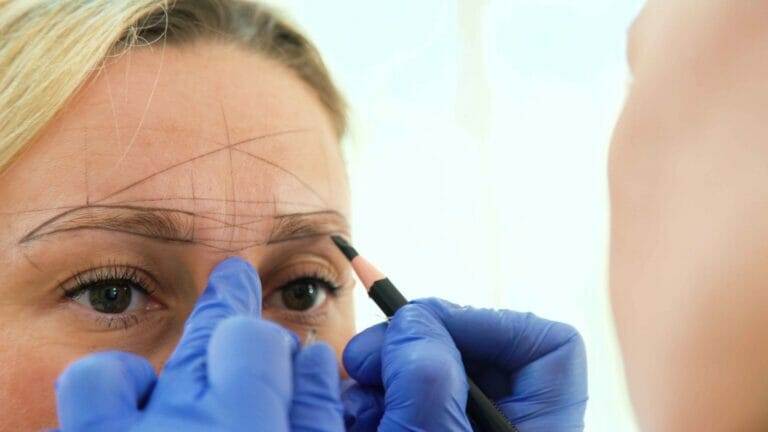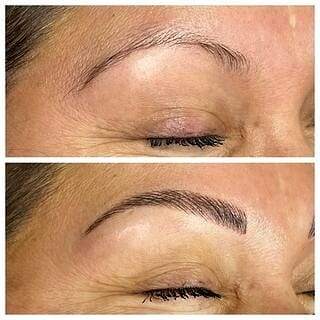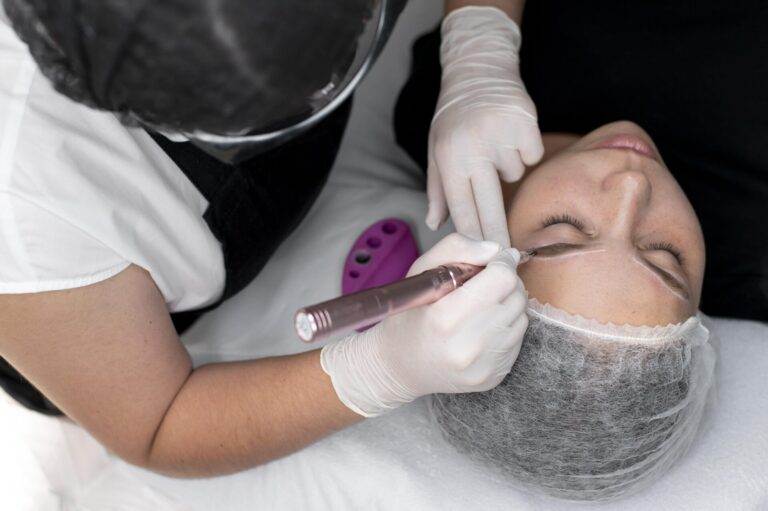Microblading has become a popular beauty trend in recent years, and for good reason. This semi-permanent eyebrow technique involves using a small handheld tool to create hair-like strokes on the skin, resulting in natural-looking and perfectly shaped brows. Unlike traditional eyebrow tattooing, microblading creates a more realistic and subtle effect, making it a preferred choice for many individuals.
The popularity of microblading can be attributed to its ability to enhance and define the eyebrows, giving them a fuller and more symmetrical appearance. It is especially beneficial for those with sparse or thinning eyebrows, as it can fill in gaps and create a more balanced look. Additionally, microblading saves time in the morning routine, as it eliminates the need for daily eyebrow makeup application.
Understanding the Microblading Process and Its Benefits
The microblading process begins with a consultation with a skilled and reputable microblading artist. During this consultation, the artist will assess your natural eyebrow shape, discuss your desired outcome, and determine the best approach for your individual needs. Once you are satisfied with the proposed design, the artist will begin the procedure.
Using a sterile blade-like tool, the artist will make small incisions in the skin and deposit pigment into these incisions. The strokes created mimic natural eyebrow hairs, resulting in a realistic and natural-looking appearance. The process typically takes around two hours to complete, with some discomfort but minimal pain.
One of the main benefits of microblading is its longevity. Unlike traditional eyebrow makeup that needs to be reapplied daily, microbladed brows can last up to two years with proper care and maintenance. This makes it a cost-effective option in the long run.
Preparing for Your Microblading Appointment
To ensure the best possible outcome, it is important to follow pre-appointment instructions provided by your microblading artist. Here are some general guidelines to follow:
1. Avoid alcohol and blood-thinning medications: Alcohol and blood-thinning medications can increase the risk of bleeding during the procedure. It is recommended to avoid these substances for at least 24 hours before your appointment.
2. Avoid excessive sun exposure: Sunburned or tanned skin can affect the outcome of the procedure. It is best to avoid excessive sun exposure or tanning beds leading up to your appointment.
3. Avoid waxing or plucking: It is important not to wax or pluck your eyebrows for at least one week before your appointment. This ensures that there is enough hair growth for the artist to work with.
4. Communicate any allergies or sensitivities: If you have any known allergies or sensitivities, it is important to inform your microblading artist beforehand. This will allow them to take any necessary precautions.
The Microblading Procedure: What to Expect
During the microblading procedure, you can expect the following steps:
1. Numbing: Before the procedure begins, a topical numbing cream will be applied to the eyebrow area to minimize any discomfort.
2. Designing the brows: The artist will use a pencil or marker to outline and design the shape of your new brows. This allows you to visualize the final result and make any necessary adjustments.
3. Microblading process: Using a sterile blade-like tool, the artist will make small incisions in the skin and deposit pigment into these incisions. The strokes created mimic natural eyebrow hairs, resulting in a realistic and natural-looking appearance.
4. Pigment application: Once the microblading process is complete, the artist will apply pigment over the entire brow area. This helps to enhance and define the color of the brows.
During the procedure, you may experience some discomfort or slight pain. However, most individuals find it tolerable and compare it to the sensation of eyebrow plucking.
Microblading Aftercare: Essential Tips for Flawless Brows
Proper aftercare is crucial for ensuring optimal healing and long-lasting results. Here are some essential tips for microblading aftercare:
1. Avoid getting your brows wet for at least 10 days: It is important to keep your brows dry during the initial healing period. Avoid getting them wet while washing your face or showering.
2. Apply a healing ointment: Your microblading artist will provide you with a healing ointment to apply to your brows during the healing process. Follow their instructions on how often to apply it.
3. Avoid picking or scratching: It is important not to pick or scratch at your brows during the healing process, as this can interfere with the pigment retention and result in patchy brows.
4. Avoid excessive sweating: Sweating can cause the pigment to fade prematurely. Avoid activities that may cause excessive sweating, such as intense workouts or saunas, for at least 10 days.
Common Microblading Myths and Misconceptions
There are several common myths and misconceptions surrounding microblading. Let’s debunk some of them:
1. Microblading is painful: While there may be some discomfort during the procedure, most individuals find it tolerable and compare it to the sensation of eyebrow plucking. The numbing cream applied before the procedure helps to minimize any pain.
2. Microblading is permanent: Unlike traditional eyebrow tattooing, microblading is semi-permanent and can last up to two years with proper care and maintenance. Over time, the pigment will fade and may require touch-up sessions to maintain the desired look.
3. Microblading is only for those with thinning eyebrows: While microblading is beneficial for those with sparse or thinning eyebrows, it can also enhance the appearance of naturally full brows by adding definition and shape.

Touch-Up Sessions: When and Why to Schedule Them
Touch-up sessions are an essential part of the microblading process. They allow the artist to make any necessary adjustments and ensure that the brows heal evenly. It is recommended to schedule a touch-up session 4-6 weeks after your initial appointment.
During the touch-up session, the artist will assess the healed brows and make any necessary adjustments to shape or color. This session helps to ensure that your brows look flawless and last as long as possible.
How to Maintain Your Microbladed Brows for Longevity
To maintain your microbladed brows for long-lasting results, follow these tips:
1. Avoid excessive sun exposure: Sun exposure can cause the pigment to fade prematurely. Protect your brows by wearing a hat or using sunscreen when exposed to the sun.
2. Avoid exfoliating or using harsh skincare products on your brows: Exfoliating or using harsh skincare products on your brows can cause the pigment to fade faster. Be gentle when cleansing your face and avoid applying products directly on your brows.
3. Use a brow serum: Using a brow serum can help promote hair growth and keep your brows looking full and healthy. Look for serums that contain ingredients like biotin and peptides.
4. Schedule regular touch-up sessions: To maintain the desired look, it is recommended to schedule touch-up sessions every 12-18 months. This will help to refresh the color and shape of your brows.
Troubleshooting Common Microblading Issues
While microblading is generally a safe and effective procedure, there are some common issues that may arise during the healing process. Here’s how to address and fix them:
1. Patchy or uneven brows: If you notice patchy or uneven areas in your brows after they have healed, it is important to schedule a touch-up session with your microblading artist. They can make any necessary adjustments to ensure that your brows look flawless.
2. Color fading too quickly: If you find that the color of your brows is fading too quickly, it may be due to excessive sun exposure or the use of harsh skincare products. Protect your brows from the sun and avoid using harsh products on them.
3. Allergic reaction: While rare, some individuals may experience an allergic reaction to the pigment used in microblading. If you notice any signs of an allergic reaction, such as redness, swelling, or itching, contact your microblading artist or a healthcare professional immediately.
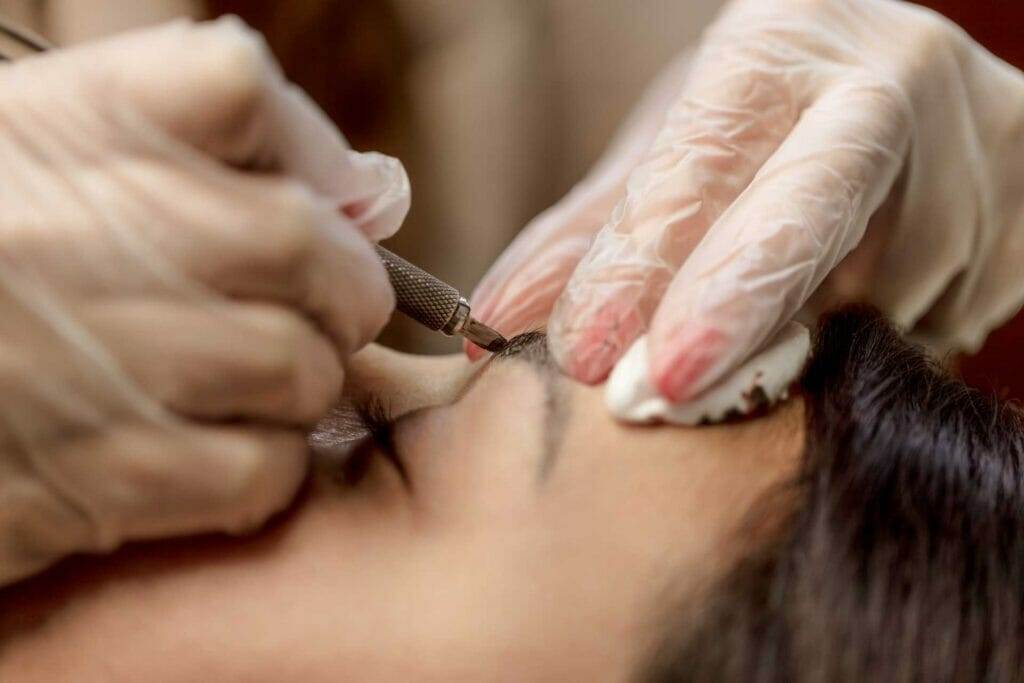
Microblading Alternatives: Pros and Cons of Other Brow Techniques
While microblading is a popular choice for many individuals, there are other brow techniques available. Here are some alternatives to microblading and their pros and cons:
1. Eyebrow tattooing: Traditional eyebrow tattooing involves using a machine to deposit pigment into the skin. This technique is permanent and may not provide the same natural-looking results as microblading. Additionally, tattooed brows may fade to a blue or green color over time.
2. Eyebrow tinting: Eyebrow tinting involves using a semi-permanent dye to darken the brows. This technique is less invasive than microblading but does not provide the same level of definition and shape.
3. Eyebrow extensions: Eyebrow extensions involve attaching individual brow hairs to the existing brows using adhesive. This technique can provide instant fullness and shape but requires regular maintenance and may not last as long as microblading.
Conclusion:
Microblading is a popular beauty trend that offers a semi-permanent solution for perfect brows. With its ability to enhance and define the eyebrows, microblading has become a preferred choice for many individuals. By finding a reputable and skilled microblading artist, following proper pre-appointment instructions, and practicing good aftercare, you can achieve flawless and long-lasting results. So why wait? Book an appointment with a reputable microblading artist today and wake up with perfect brows every day!



